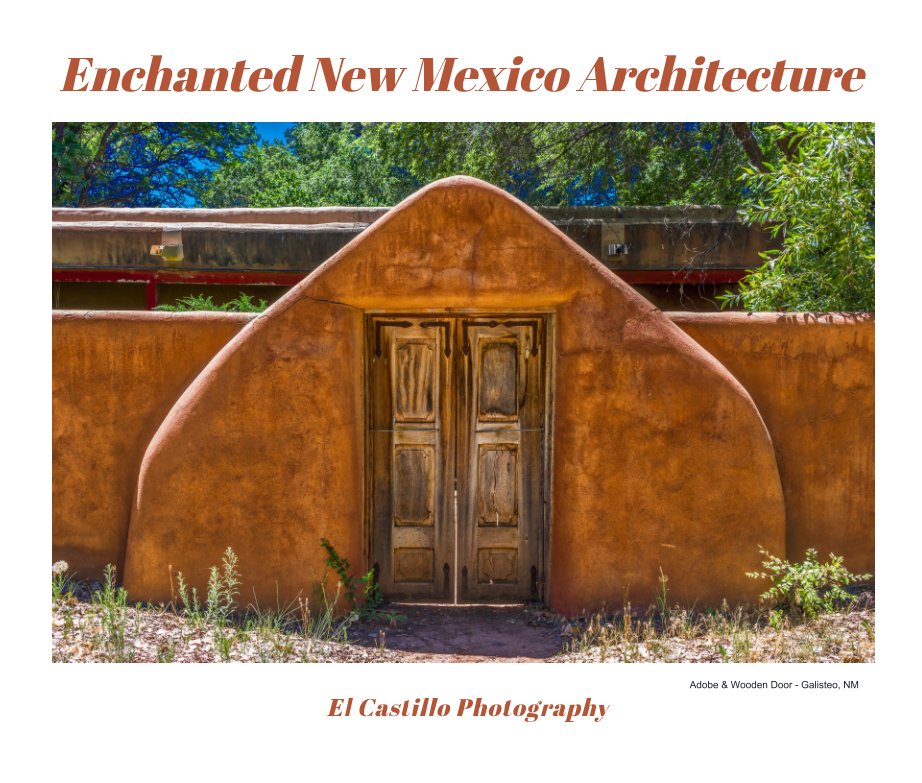Enchanted New Mexico Architecture Photography
New Mexico Photography
de Gilbert S. Castillo
Este es el precio que tus clientes ven. Editar lista de precios
Acerca del libro
New Mexico historic adobe architecture evolved from early Native American dwellings that impressed the Spanish when they first arrived in the region in the 16th century. They found Pueblo Indians in the Rio Grande Valley living in communal houses with hundreds of rooms, often four or five stories high, accommodating thousands of people.
The Spanish, who called these communities "pueblos" (the Spanish term for villages), saw how the Pueblo people built their shelters as a series of rooms surrounding a central plaza, with earth floors and flat roofs held up by pine logs, or vigas. These beams were covered diagonally or at right angles with small poles, or latillas. The Pueblo Indians built their homes using wood, stone and puddled adobe, a laborious method of molding adobe walls by hand then laying them in low bands to dry before adding the next layer.
As the Spanish settlers established communities in the region, they sought to improve the Pueblo construction methods using adobe. After all, the essential materials—mud, earth and straw—were plentiful and readily available. But to streamline the construction process, they designed wood molds to shape uniform adobe bricks.
This melding of Native American with Spanish architectural influences gave rise to the Pueblo style, also known as Spanish Pueblo. In the Spanish homes, the style's characteristic elements include round walls, corner fireplaces, vigas, flat roofs and a series of rooms fronted by covered porches, called portales, that enclosed an exterior patio, echoing the Pueblo rooms designed around a central plaza.
The Spanish often built their houses with one or two rooms then expanded them later on with additions to accommodate growing families. They installed few doors or windows in order to retain heat during the winter and maintain cool temperatures during the summer.
Características y detalles
- Categoría principal: Arquitectura
-
Características: Apaisado grande, 33×28 cm
N.º de páginas: 20 -
ISBN
- Tapa dura, sobrecubierta: 9781367405684
- Fecha de publicación: jul. 30, 2016
- Idioma English
- Palabras clave Architecture, Adobe, New Mexico, Southwest, Pueblo
Acerca del creador
Born in 1954 in Victoria, Texas; Gilbert S. Castillo was raised on a ranch along the central Gulf Coast of Texas. In 1971, while researching US southwest history in the library, Gilbert discovered a book (Taos Pueblo) by Ansel Adams and fell in love with photography. He was determine to buy a camera. While working at a local restaurant for $1.60 per hour, he saved enough money to buy his first camera; a Minolta SRT 101 with a 50mm lens for $450.00. This was the beginning of a continuous love for photography. Gilbert holds degrees in education and mechanical engineering. He is a self-taught photographer. Gilbert has been photographing for 45 years and has traveled to every state in the US and once around the world with his cameras. He specializes in landscape and urban photography. He currently owns Nikon D300, Nikon D800, Nikon D810 and Sony RX1 digital cameras. Many of his photos are privately owned throughout the United States as well as countries throughout the world.


